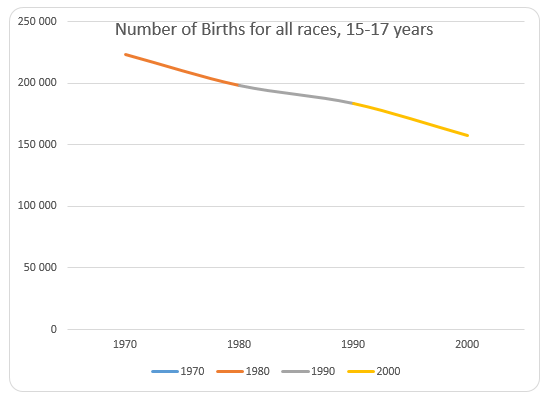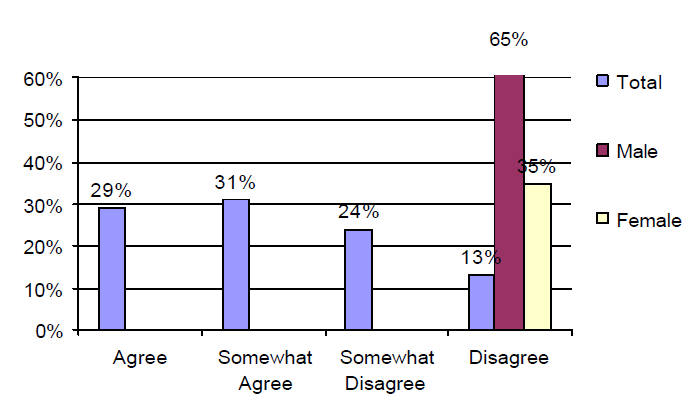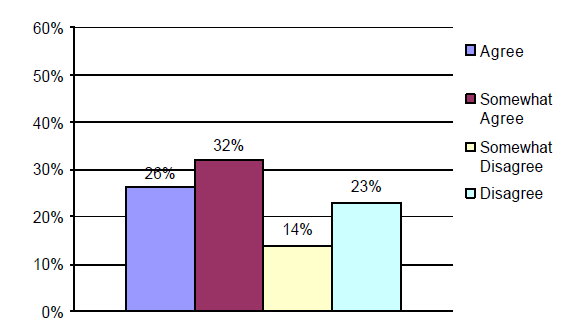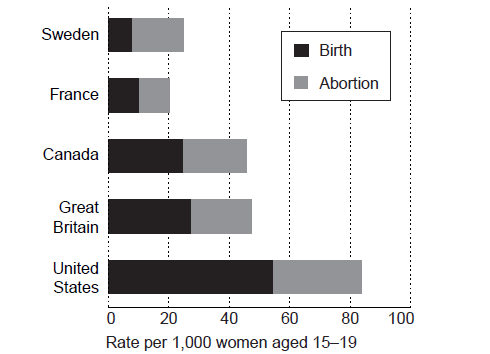Teen promiscuity is a term which no one really talks about in the media until something has already happened and is news worthy. I believe if the media was more proactive on giving information to their society to help in preventing teen promiscuity and the issues that come with it. Some believe that parents should be held responsible for helping their teen make good decisions; otherwise, they just keep their teen too busy to party with the opposite sex.
There are many after school programs available to teens if the parents work late or just can not control their teen. Others believe that a teenager is going to do whatever they want to do regardless of how much control the parents have. Teens will just lie, ditch, and manipulate their authoritarians to get what they want and when they want it. How can the public school system hold the parents responsible for their children’s absences from ditching school, Yes this is true, some parents have to pay a fine or have to attend school with their child, this is called being responsible for your child.
This paper will be focused on the difficulties teenagers face by having premature sex and early pregnancies. This paper will also analyzes teen promiscuity, taking the position that it is socially underestimated as a real concern, and unlike some opinions of others, no teenager under the age of 18 should be allowed to have sex and therefore there should be a re-evaluation of the way this issue is handled.
It is difficult to understand the feelings of teenager’s and what makes them desire love earlier, leading to sex earlier. With all the information provided to teenagers, why is it that most of them think that they can not get pregnant, or that they are resistant to STD’s? Perhaps teens these days are at a disadvantage and do not get a chance to talk with their parents about what is happening to their body, what is sex, love, and relationships.
Parents need to tell them the scary parts of the real world so they know in advance rather than experiencing it first hand. The analysis of statistical data regarding how many teens are actually having sex is considered to be shocking. Analyzing the arguments for teen promiscuity as an overrated issue, it can be seen that the birth rates for girls between 15 and 17 years of age was the lowest in this decade, 157,209 compared to 183,327 in the nineties from 223,590 in the seventies, see Fig 1. (US Census, 2007). Surveys indicate that adults today perceive that 16 is a proper age for having sex. Additionally, other surveys indicate that 17 is the proper age for teenagers having sex. That means that it is not a problem that teenagers have sex, as long as their age is above 16. (Mercury, 2001).
These surveys are shocking and people who believe that teenagers are going to do what they want no matter what are going to accept that age 16 and 17 is an appropriate age if sex is going to happen, the other majority of people believe that teenagers whether they are 15, 16, or 17 are still to immature to be making decisions to have sex and ultimately risk having babies or STD’s.

There is an argument that despite the decline there was a recorded rise of teenage birth after a 14 year decline. “More than one million teenage girls become pregnant each year in the U.S. — 11% of all women aged 15-19 — with over 40% of all females under 20 having at least one pregnancy. Over three fourths of teen pregnancies are unplanned, accounting for about one fourth of all accidental pregnancies each year. About 55% of teen pregnancies end in birth, 31% in abortion, and 14% in miscarriages. Of those teenage women who choose to become mothers, one out of four will have a second child within two years of their first.” (Horizon solutions site, 2009) Therefore there is a certain position that the signs are not optimistic.
Unexpected teenage pregnancy is predicted to be one of the hardest obstacles in family relationships. There is an American TV series “The Secret Life of the America Teenager”, which shows how unpredictable pregnancy is when having sex. It tells the story of a 15 year old that had sex one time and became pregnant. The show touched on the real emotions of the teenager, the parents and everyone else who is in her life.
It shows the problem of teenage promiscuity and the ways the teens try to tackle it. The motives of the show are aimed at anti-pregnancy promotion among teenagers, demonstrating the difficulties teens need to face. An inner understanding of the issue among young people is one way teens might think twice about pregnancy. (The Secret Life of the America Teenager. 2008) The Student Advisory Committee (SAC) founded by Congressman Michael Honda, reported some interesting findings through surveys conducted within 14 different schools. According to his survey results 60% of the teenagers do believe that having sex in high school is too early, see Fig.2. (Student Advisory Committee, 2004).
Another result reflected that 58% of the teenagers agree that their friends are sexually active, see Fig.3. Therefore, the results of these surveys indicate that the problem certainly exists, and there is awareness in the teenagers. Talking to Caitlin a 15 year old girl, she explained to me another type of teenage promiscuity in schools, it is called the sex bracelet concept, taking place when girls as young as 12 and as old as 18 know that if they wear a certain color of bracelet to school, this gives boys the knowledge of how far they will go sexually. For instance if Caitlin wears a pink bracelet, she will only kiss the boy. If she wears the pink and green bracelet she will give oral sex to the boy.
If she wears a purple and a black bracelet she will have sex with a boy. This is so sad, that girls are ok with providing services to boys without shame. Caitlin assured me that it is all about popularity, the boys make them popular and they are never forced to do anything they do not want to do. Though that was hard to hear, it is something that is happening with our teens. I guarantee you that the parents of the teens have no idea the bracelets their girls are wearing are for solicitation.
What about the 17 girls from Massachusetts, none older than 16 from Gloucester High School, who made a pact to get pregnant and raise their babies together? What is this need for premature motherhood? Is this misguided behavior, or a simple need for love? Additionally, it is stated that teen promiscuity lies in the incorrect perception based on the overwhelming sexual imagery in the media today and the prediction that teens follow and imitate what they see.
For example, a show such as “The Secret Life of the American Teen” on ABC Family channel, a network geared towards families, leads the viewers, especially the teen viewers to believe that sex is ok since the high school in the show has everyone wanting and having sex. Perhaps the show has gone too far with the teen sexual content. Summarizing the findings toward teenage promiscuity, regardless if they are having it teens know sex is an issue.


Early pregnancy is considered to be an important social and psychological factor changing the world perception of young people and influencing their behavior. Another American T.V Series is “MTV’s 16 and Pregnant” watching this show for research; I have learned that this show is trying to show teenagers what real life is when you are pregnant. Most of the times the parents are supportive and help the pregnant teen become a mom, in other cases parents are not supportive and the teen are forced to move out and live without support.
It looks like this show is trying to decrease the amount of teenage pregnancies by showing real life struggles and responsibilities. On one episode, Whitney a pregnant 16 year old, experienced the life turned upside down, her friends stop hanging out with her, her boyfriend leaves her and her parents refuses to support her. This is real life; this is something all teens should be watching and learning about. The case of Whitney, described above, demonstrates what most youths are facing when young and pregnant. Teens need to know that it is not glamour, it is the opposite.
Modern society can hardly identify the causes for increase in early pregnancies; it can be connected with the desire to become independent and live a responsible life, though in most cases such situations end up with early despair of young inexperienced parents. Possible causes for teen pregnancy can be listed as many factors.
These factors can be identified as early school failure, early behavior problems, family dysfunction and poverty. Peer-pressure, school popularity, immaturity and many other factors can cause teens to be more likely to get pregnant. The connection of these factors with teen pregnancy can be seen in the fact that “Female teenagers who experienced none of these risk factors had the lowest rate of pregnancy. The more risk factors faced by the teenager, the higher the likelihood of the teenager becoming pregnant and giving birth” (Cherry, Dillon, & Rugh, 2001, p. 185).
Having a baby can change teens’ lives in ways they never imagined, from sleeping less to staying home more. The recent rise in teen pregnancy is also due to the changes in parents allowing contraceptives usage. Is giving birth control pills or condoms to teens giving them permission? Perhaps another contraceptive method is available to teens called the infant simulator which is a computerized baby doll that acts like a live baby in all ways. This is an excellent device through a program called Baby, Think it over which is mentioned below.
Switching back to the position that teen promiscuity is a real threat, it can be seen that everything previously mentioned, does not support the exaggeration of teen promiscuity and teen pregnancy. Whether a decline or a rise in any chosen indicator, e.g. teen pregnancy, teen birth, or STD’s, it can be said that this data is not indicative of a global problem.
Taking as an example the pregnancy rates, birth rates and abortion rates for adolescents, as of the mid-nineties the United States had the highest position in these ratings among other developed countries, see Fig. 4. (US Census, 2004). The possible causes of such ratings lie in the facts that, although the level of sexual activity do not vary considerably, teenagers in the United States are the most likely to have sexual intercourse before the age of 15. (US Census, 2002). Furthermore, contraceptive use is playing a major role not in favor of the United States among other developed countries.

Analyzing the concern of Sexually Transmitted Diseases (STDs), the same trend can be apparent as well, where “U.S. teenagers have higher STD rates than teenagers in other developed countries—for example, England, Canada, France and Sweden—because they have more sexual partners and probably lower levels of condom use.” (US Census, 2002). Reported by a study released by The Centers for Disease Control and Prevention (CDC), that 1 out of 4 teenage girls between the ages of 14 and 19 are infected with an STD. (Brinkmann, 2008). The decline in teen pregnancy did not change the fact that “U.S. teenage pregnancy rate is still among the highest among industrialized nations.” (Ventura, et al., 2006).
There are Preventive Programs for teens, but are they effective?
Preventive programs that work starts early, before young people reach puberty, and before they have developed patterns of behavior. There is a strong contradiction in the effectiveness of different programs devoted to decreasing the sexual activity of the adolescents. The first program out there is the Abstinence-only educational programs. Most of the teens that enter this type of program have already been sexually active, and are now “re-committing” to abstinence.
This program is a federal funded program. They do not provide information about condoms, birth control and sexual expression; it excludes gay teens and teaches that the only place to have sex is in a heterosexual marriage. There is no evidence to suggest it works, and there are several studies the show it does not work. Lastly, President Obama firmly opposes federal funding for abstinence-only-until-marriage programs. He believes that science-based sex education in schools is the best thing to do. ( Jodi Jacobson, 2009) None of the programs showed an impact neither on the rate of sexual abstinence nor on the age of the first sexual intercourse. (Christopher Trenholm, 2008).
Another program would be School-based sex education. Evidence suggests that effective school program’s will include the following elements: reducing specific risky behaviors; Providing accurate information about the risks associated with sexual activity, about contraception and birth control, and about methods of avoiding or deferring intercourse and much more. (AVERT, 2009) This program can be effective if all teens are required to take it in school; the only problem with this program is you need to find a school that offers it as not all school districts offer it. Another approach is teaching the teens about using contraceptives, however that affects only the consequences of teen’s promiscuity, i.e. teen pregnancy and STDs; it does not deal with the causes that lead to such behaviors.
This program is ineffective as it does not teach teenager prevention of sexual promiscuity; it just teaches them they should use contraceptives. Another great program which has been seen on movies and advertisements is the computerized baby program called The Baby think it over stimulator. “ The infant simulator is a lifelike, life-size (20 1/2 inches) vinyl baby weighing 6.5 pounds. It is anatomically correct and available in both sexes and five different ethnicities.
An internal computer simulates an infant crying at realistic, random intervals 24 hours a day. Intervals can be adjusted from 15 minutes to 6 hours for a normal, cranky, or particularly easy to care for baby” ( Horizon Solutions Site, 2009) The creator of the program thought that the lesson learned are not about values but “sleeplessness” and sleeplessness is a compelling rationale for not getting pregnant. The program can be utilized in schools, organizations and at home. It seems that after this experience with the program it is very effective. One of the factors that could be implemented in all the programs is parental involvement.
In that regard, preventive programs would not be isolated in their influence, but would be engaging family authorities in addition to school authorities. In a study of Parent-Adolescent Relationship Education (PARE), it was shown that “social interactive activities and parent-child discussions designed into curriculum-guided prevention education are more effective than a traditional didactic delivery of PARE for strengthening social and self controls to reduce risks for adolescent pregnancy and STDs.” (Lederman, Chan, & Roberts-Gray, 2008).
Therefore, focusing on family interactions can be proven effective, where these interactions do not necessarily have to be about sex, rather addressing the state of mind of teenagers. These types of programs can be discrete through a family counselor and can be found in any city.
In conclusion, the analysis of teen promiscuity demonstrated the fact that teen promiscuity is an issue of much more than just sexual behavior, it has so many consequences with some so dangerous that it should be given more attention, especially in terms of its prevention. Parents need to reach out to their teen even if they are first rejected. The more they insist being involved the better off their teens will be.
Also prevention programs should address teen promiscuity from all aspects, not only the consequences, but also the core of the problem, i.e. the behavior and moral perception. In that sense, the government alone will not change the minds and the hearts of the teenagers, whereas the family can. In addition to the family, schools should contribute more to help shift the mindset of the teenagers, where the teachings would not address only the sexual activity factor, but the moral base in general and encouraging children to make healthy decisions in all aspects of their life.
References
Antecol, H., & Bedard, K. (2007) Does single parenthood increase the probability of teenage promiscuity, substance use, and crime? Journal of Population Economics, 20(1), 55. Web.
AVERTing HIV and AIDS (2009) Sex education that works. Web.
Bakalar, N. (2009). Trends shift, with births on the rise. New York Times. Web.
Brinkmann, S. (2008). Epidemic of sexually transmitted diseases among teen girls. The Centers for Disease Control and Prevention (CDC). Web.
Campos, D. (2002). Sex, youth, and sex education : a reference handbook. Santa Barbara, California: ABC-CLIO.
Cherry, A. L., Dillon, M. E., & Rugh, D. (2001). Teenage pregnancy : a global view. Westport, Connecticut: Greenwood Press.
Horizon Solution Site (2009). Have a Baby? I Think I’ll Think It Over. solutions-site. Web.
Jacobson, J. (2009). The Obama Mandate: End Abstinence-Only-Until-Marriage Programs RH Reality Check. Web.
Lederman, R. P., Chan, W., & Roberts-Gray, C. (2008). Parent-Adolescent relationship education (PARE): program delivery to reduce risks for adolescent pregnancy and STDs. Behavioral Medicine, 33(4), 137-143. Web.
MTV’s 16 and Pregnant. (2009). Web.
Shuttleworth J (2001). Teenage promiscuity overstated, prof says. [Final Edition].The Windsor Star, p. A11. Web.
Parker-Pope T. (2009) The myth of rampant teenage promiscuity. The New York Times. Web.
Sternheimer, K. (2006). Kids these days : facts and fictions about today’s youth. Lanham, Md.: Rowman & Littlefield.
Student Advisory Committee (2004). Teenage sexuality: Examining the perceptions and realities. Congressman Honda’s student advisory committee handbook. Web.
Trenholm C., Fortson K., Clark M., Quay L., Wheeler J., (2008). Impacts of abstinence education on teen sexual activity, risk of pregnancy, and risk of sexually transmitted diseases. Journal of Policy Analysis and Management, 27(2), 255-276. Web.
The Alan Guttmacher Institute (2002) Teenagers sexual and reproductive health. Web.
The Secret Life of the America Teenager. (2008). Web.
US Census Bureau (2007) Teenagers – Births and birth rates, by age, race, and Hispanic origin. Web.
Ventura, S., Abma, J., Mosher, W., Division of vital statistics, Henshaw, S., and The Guttmacher Institute. (2006) Recent trends in teenage pregnancy in the United States, 1990-2002. National Center for Health Statistics. Web.